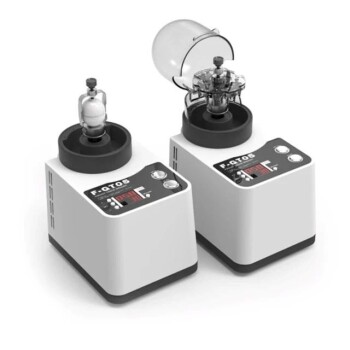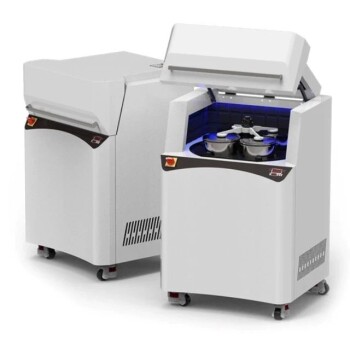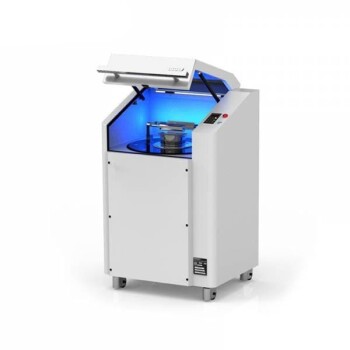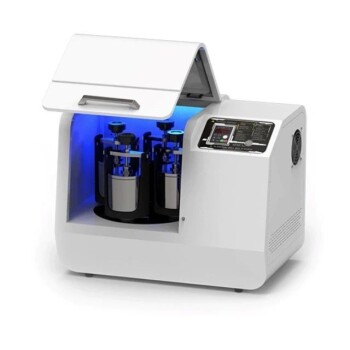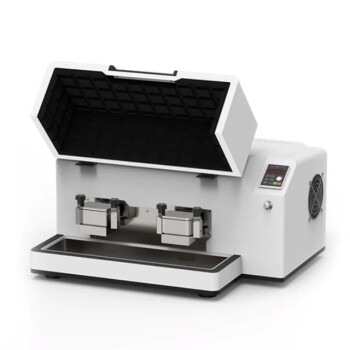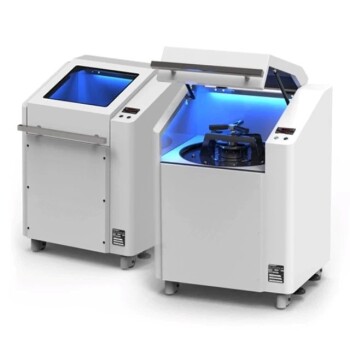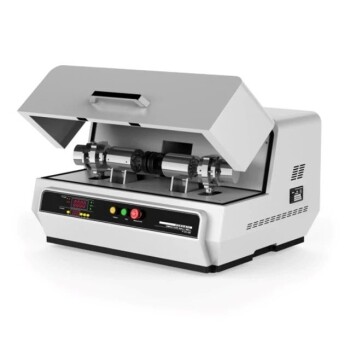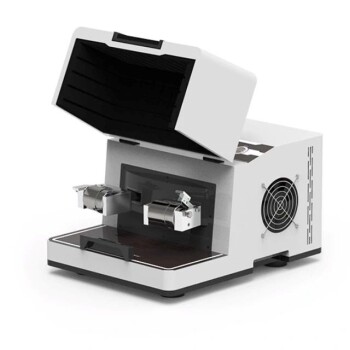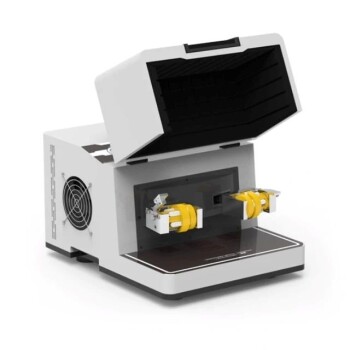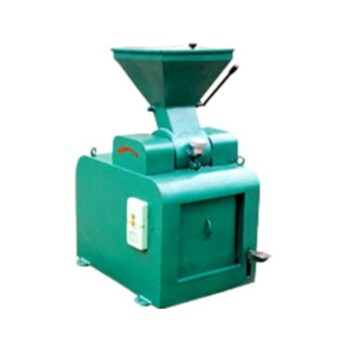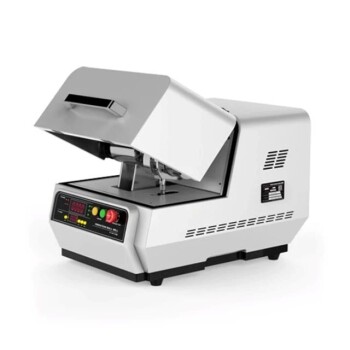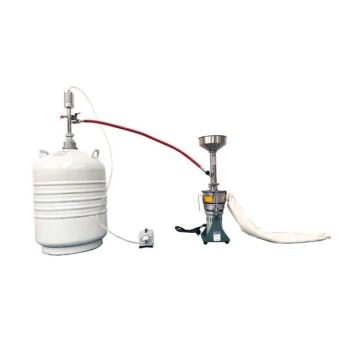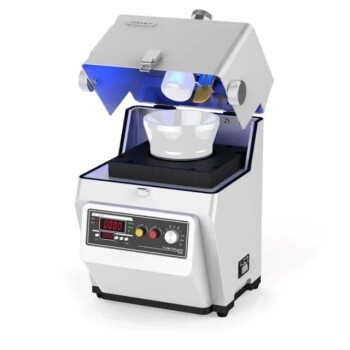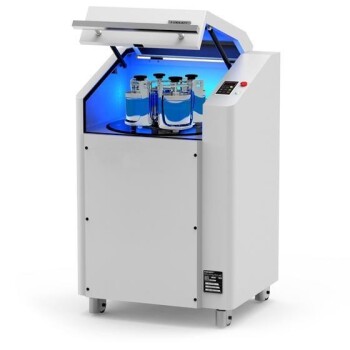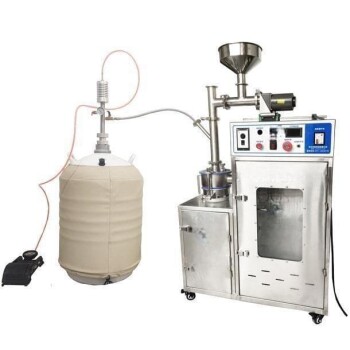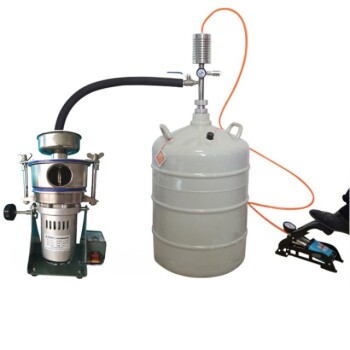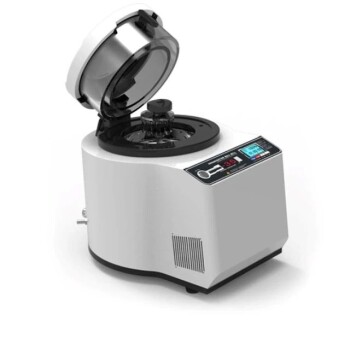冷冻组织破碎机简介
定义和重要性
冷冻组织粉碎机是实验室环境中不可或缺的工具,在粉碎样本以防止交叉污染方面发挥着关键作用。与传统方法不同的是,这些破碎机设计用于高效处理大规模加工,确保在整个研磨过程中保持样本的完整性。这种能力在生物技术和制药等领域尤为重要,因为这些领域对样本的纯度要求极高。
冷冻组织粉碎机的重要性不仅仅在于效率。冷冻组织粉碎机的设计旨在最大限度地降低污染风险,而这正是传统粉碎方法面临的共同挑战。通过采用先进的技术和材料,这些破碎机为通常繁琐且容易出错的样品制备过程提供了可靠的解决方案。这不仅提高了实验室结果的准确性,还简化了工作流程,使其更易于管理,耗时更少。
此外,冷冻组织破碎机的多功能性也值得一提。从软组织到硬骨,它们可以根据各种类型的样本量身定制,确保针对每种特定材料优化研磨过程。这种适应性是冷冻组织粉碎机在不同科学学科得到广泛应用的关键因素。
总之,冷冻组织粉碎机不仅是工具,也是现代实验室实践中的重要组成部分,弥补了传统方法与精确、无污染样本处理需求之间的差距。它们的开发和应用在不断发展,反映了科学研究日益增长的需求和对实验室程序更高标准的追求。
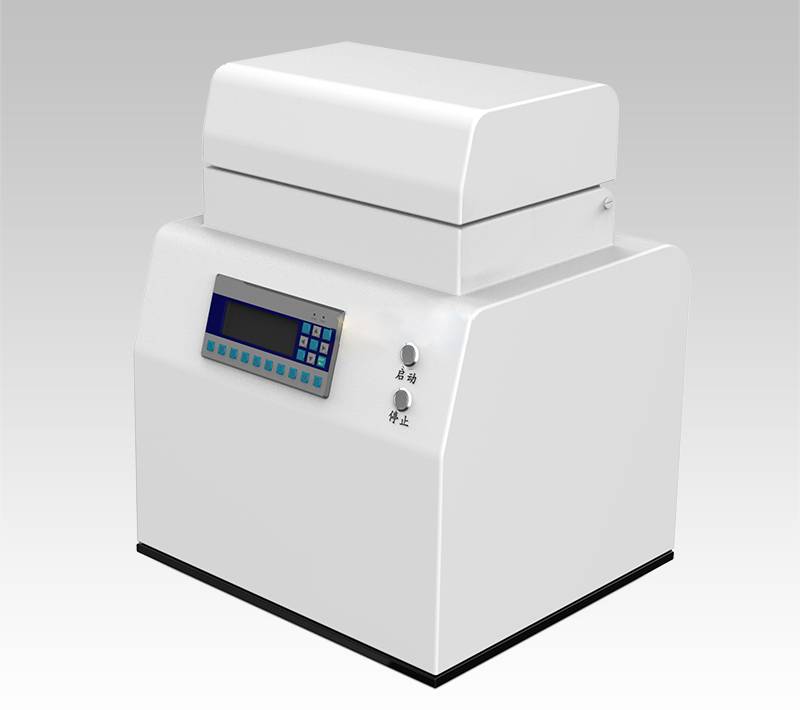
选择合适的破碎机
选择合适的冷冻组织破碎机需要考虑多方面的因素,包括各种操作参数和特定材料的要求。破碎机的 振荡模式 破碎机的摆动模式在决定其效率和效果方面起着关键作用。破碎机可以在垂直、水平或三维等多个维度上摆动,每种摆动方式都具有适合特定应用的独特优势。例如,垂直摆动非常适合精细样品,而三维摆动可提供更彻底的研磨过程,适合坚固材料。
研磨方法 研磨方法 是另一个关键因素。不同类型的粉碎机,如 行星球磨机 臼式研磨机、刀式研磨机、盘式研磨机和颚式破碎机等不同类型的破碎机可满足各种研磨需求。 行星式球磨机 以其高能效和精细研磨能力而闻名,适合研究级应用。相反,刀磨机因其速度快、操作简单而更适用于批量样品处理。
此外 加工材料的特殊要求 的特殊要求也不容忽视。不同硬度、密度和化学性质的材料需要不同的研磨方法。例如,软组织可能需要温和的研磨方法,以避免过度降解,而硬组织则需要更强力的研磨技术。因此,了解材料的特性对于选择能确保最佳样本完整性和处理效率的粉碎机至关重要。
总之,选择冷冻组织破碎机是一个细致入微的过程,需要平衡振荡模式、研磨方法和特定材料的需求,以实现实验室样品制备的最佳效果。
历史发展
早期创新
实验室用研磨仪器的发展始于 1923 年 Retsch 开发的第一台研钵式研磨仪器。这一开创性的创新为更复杂的研磨技术奠定了基础。1962 年,FRITSCH 推出了 行星式球磨仪 这一重大进步彻底改变了研磨工艺的精度和效率。随后几年,Tomy 和 MP 等公司也迅速推出了类似技术。
这些早期的发展对实验室研磨仪器格局的形成起到了关键作用。行星式球磨仪 行星式球磨仪 例如,行星式球磨仪的推出使研磨过程更加可控和高效,这对于处理易碎样品和确保污染最小化尤为有利。这一创新时代为该领域的进一步发展奠定了基础,推动了研磨技术的不断改进,以满足科学研究和工业应用不断发展的需求。
国内外趋势
虽然进口冷冻组织破碎机往往价格不菲,但近年来国内制造商已经取得了长足进步。国产破碎机的质量和技术进步迅速,有效缩小了操作细节上的差距,提升了用户体验。这种转变在以下几个方面尤为明显:
-
运行效率:目前,国内破碎机的运行效率可与国际同类产品媲美。精确控制、自动化流程和用户友好界面等功能已成为标准配置,确保用户无需大量培训或专业知识即可实现相同水平的性能。
-
定制和支持:国产选项的主要优势之一是能够根据特定需求定制破碎机。制造商可提供定制解决方案,满足特殊要求,如专门的振荡模式或研磨方法。此外,本地支持和维护服务也更容易获得,从而减少停机时间并确保连续运行。
-
成本效益:国产破碎机的初始投资和持续维护成本通常低于进口型号。这种成本效益使实验室和研究机构能够更有效地分配预算,而不影响设备的质量或性能。
-
技术集成:目前,国产破碎机采用了物联网连接、实时监控和数据分析等先进技术。这些功能不仅能提高运行效率,还能为碾磨过程提供有价值的见解,使用户能够优化工作流程,取得更好的效果。
总之,国产冷冻组织粉碎机的快速发展使其成为许多实验室和研究机构的可行且具有吸引力的选择。通过提供可比的性能、更大的定制性和成本效益,这些破碎机正逐渐成为那些希望提高组织研磨工艺的人的首选。
分类和原理
振荡模式
破碎机有多种摆动模式,每种模式都是根据具体应用和材料特性量身定制的。这些模式可大致分为垂直摆动、水平摆动和三维摆动,每种模式都具有不同的优势。
- 垂直摆动:这种模式对需要精确控制研磨的材料特别有效。它能确保材料损耗最小,是对均匀性要求极高的精细样品的理想选择。
- 水平摆动:该模式最适合批量加工,产量高,可高效处理大量材料。它通常用于对速度和数量的要求高于精细精度的行业。
- 三维摆动:这种先进的模式结合了垂直摆动和水平摆动的优点,可提供更全面的研磨作用。它适用于从软到硬的各种材料,在实现均匀研磨方面尤为有效。
每种摆动模式都有其独特的应用,因此必须根据被加工材料的具体要求选择合适的破碎机。
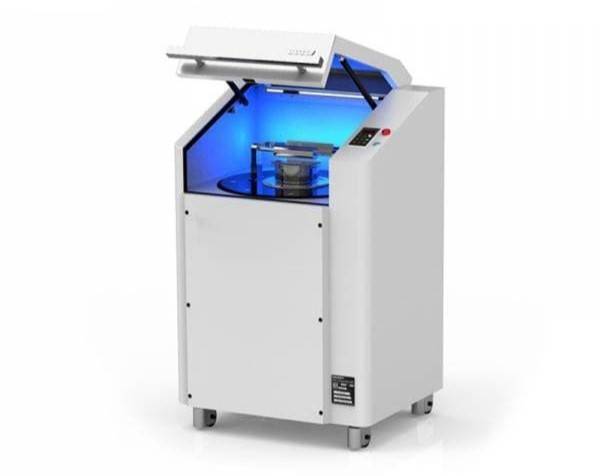
研磨方法
研磨方法是有效处理冷冻组织样本的关键,可确保在不造成交叉污染的情况下对样本进行精细研磨。研磨方法的选择取决于被处理材料的具体要求、所需的颗粒大小以及完成任务所需的效率。
该领域有几种常用的研磨方法,每种方法都有其独特的优势和应用。 行星式球磨机 行星式球磨机以能效高而著称,尤其适用于需要高精细度的材料。它们的工作原理是利用离心力加速研磨球,而研磨球又反过来撞击样品,从而产生细小均匀的颗粒。
砂浆磨 是另一种受欢迎的选择,尤其适用于需要温和研磨过程的材料。这些研磨机使用研钵和研杵机制来粉碎样品,非常适合可能会被更具侵蚀性的方法损坏的易碎材料。
对于需要更强力方法的材料来说 刀磨机 和 盘式研磨机 常用。刀磨机使用锋利的刀片将材料切成小块,而盘磨机则使用旋转盘研磨样品。这两种方法对硬质和纤维材料都很有效。
最后是颚式破碎机、 颚式破碎机 用于对大型样品进行初步粉碎。颚式破碎机特别适用于在球磨机或砂浆磨机等进一步加工之前减小材料的尺寸。
总之,选择合适的研磨方法对于实现组织加工的预期效果至关重要。每种方法都有其优势,适合不同类型的材料和加工需求。
研磨球的选择
材料考虑因素
研磨球材料的选择是一个关键因素,对粉碎过程的效率和设备的使用寿命都有重大影响。每种材料都具有独特的特性,可以提高或阻碍研磨性能,具体取决于所处理组织样本的具体要求。
常用的研磨球材料包括
-
不锈钢:不锈钢球以耐用和耐腐蚀著称,用途广泛,可处理多种组织类型。不过,它们可能会带来金属污染,这在某些敏感应用中是个问题。
-
氧化铝:这种钢球非常坚硬耐磨,是高冲击研磨的理想选择。它们还具有非反应性,可降低污染风险。不过,它们的高成本可能是一个限制因素。
-
玛瑙:玛瑙球硬度高、摩擦系数低,可确保高效研磨,同时将样品损失降至最低。它们特别适用于必须尽量减少污染的精细样品。
-
硬质合金:硬质合金球非常耐用,可承受高压研磨环境。它们常用于要求高精度和组织样本硬度较大的应用场合。

| 材料 | 优点 | 缺点 |
|---|---|---|
| 不锈钢 | 耐用、耐腐蚀、用途广泛 | 潜在的金属污染 |
| 氧化铝 | 坚硬、耐磨、无反应 | 成本高 |
| 玛瑙 | 坚硬、摩擦小、样品损失少 | 脆,在极端条件下会碎裂 |
| 硬质合金 | 极其耐用,适用于高压环境 | 价格昂贵,对于某些应用可能太硬 |
应根据组织样本的具体需求、所需的研磨效率以及对潜在污染的容忍度来选择材料。每种材料都有自己的优点和缺点,因此选择过程对于优化粉碎效果和设备寿命至关重要。
磨球直径和数量
研磨球的直径和数量是对破碎效果和整体生产效率有重要影响的关键参数。这些参数必须根据被加工材料的具体特性和预期效果进行精心选择。
下表概述了不同直径和数量的磨球的典型影响,以作说明:
| 钢球直径(毫米) | 钢球数量 | 破碎效果 | 生产效率 |
|---|---|---|---|
| 10 | 100 | 中 | 高 |
| 20 | 50 | 高 | 中等 |
| 30 | 25 | 非常高 | 低 |
大球由于质量和动能更大,通常能提供更强的破碎效果,但由于在磨机内占据更大的体积,会降低整体研磨效率。相反,较小的球可通过增加单位时间内的撞击次数来提高效率,但它们可能无法提供与较大球相同的破碎力。
因此,应通过仔细实验并考虑材料的硬度、脆性和最终产品所需的细度来确定球直径和数量的最佳组合。这种平衡可确保研磨过程既有效又高效,满足实验室或工业应用的特定要求。
选择合适的破碎机
比较振动球磨机和行星式球磨机
在研磨冷冻组织样本时,通常会考虑两种著名的研磨机:振动球磨机和行星式球磨机。 行星式球磨仪 .这两种研磨机都有各自独特的特点和运行效率,但在能量利用和研磨效果方面有很大不同。
振动球磨机以能够在短时间内产生高研磨能量而著称。研磨球在磨腔内的快速摆动可以快速高效地处理物料。在处理大量样品或时间是关键因素时,这种效率尤为有利。尽管速度很快,但振动球磨机产生的研磨效果通常可与以下设备相媲美 行星式球磨仪 因此在许多实验室应用中都是可行的选择。
另一方面 行星式球磨仪 可提供更可控、更精细的研磨过程。这些研磨机采用行星运动原理,研磨球以复杂的高能轨迹运动。这使得研磨效果更均匀、更彻底,对于易碎或敏感材料尤其有利。而 行星式球磨机 可能需要更多的时间才能达到理想的研磨效果,但由于对研磨过程的精确控制,最终产品的质量往往更胜一筹。
| 特点 | 振动球磨机 | 行星式球磨机 |
|---|---|---|
| 研磨能量 | 高 | 可控 |
| 时间效率 | 高 | 中等 |
| 研磨效果 | 相当 | 高级 |
| 应用适用性 | 批量加工 | 易碎材料 |
总之,振动球磨机在速度和能效方面表现出色、 行星式球磨仪 可提供更精细、更可控的研磨过程,因此非常适合需要更高精度的材料。在这两种研磨机之间做出选择,最终取决于实验室的具体要求和所处理材料的性质。
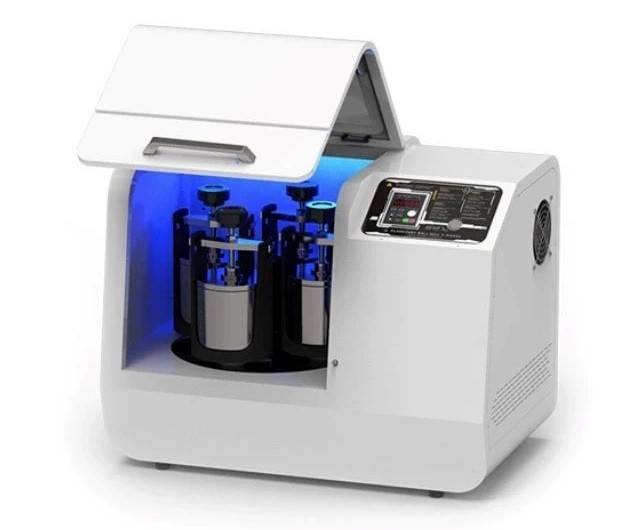
操作注意事项
在选择冷冻组织粉碎机时,了解每个品牌特有的操作细微差别至关重要。这些差异会极大地影响研磨过程的效率和效果。例如,振荡模式(垂直、水平或三维)可决定最适合您需求的样品制备类型。同样,研磨方法也可能包括 行星球磨仪 到砂浆磨,都会影响样品的最终粒度和均匀性。
为确保最适合您的特定要求,建议您不仅要阅读客户评论,还要进行个人试用。评论可以让您深入了解破碎机的用户体验、耐用性和整体性能。但是,个人试用可以让您亲自评估设备的适用性,确保其满足实验室或研究环境的独特需求。这种亲身体验的方法有助于验证制造商的说法,并确保所选的破碎机符合您的操作目标和样本处理需求。

